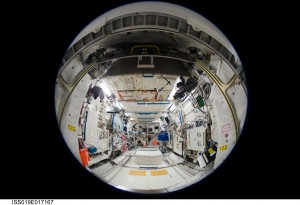
By Bob Chesson
Most European Space Agency (ESA) projects are contracted to European industry on a firm fixed-price (FFP) basis. These FFP contracts and their statements of work transfer most of the project risks to the prime contractor, who then transfers as much risk as he can to subcontractors and equipment suppliers.
The prime contractor has a high probability of completing the project successfully within cost and schedule, provided the ESA project manager does not change the requirements, and provided that the industrial organization is sound, with a competent and experienced prime contractor who has good oversight and direction of his subcontractors and suppliers. This outcome also presupposes that the lower-level contractors are competent and will provide early indications to the prime when things start to go wrong. In practice, requirements will probably change due largely to external influences beyond the ESA project manager’s control, and he will have set aside a realistic risk reserve to cope with the changes.
Even if these conditions are not met, the ESA project manager should not in theory be liable for the effects of poor performance in the industrial camp. Theory and practice are often different, though.
A weak prime contractor with little oversight and control of his subcontractors and suppliers may not detect a problem in, for example, an equipment supplier’s design or development program. The supplier may choose to keep quiet, especially if he is aware of the possibility of future customer- or prime contractor-imposed changes to his area, which he can use to financially cover additional work needed to fix the problem. So basic problems can remain undetected until relatively late in the integration and test phase, when their impact is sometimes so enormous that the prime is unable to cover the costs within the FFP contract. In those cases, ESA is left with the options of financing the overruns or terminating the project.
To avoid this, many project managers, especially when they have reservations about the competence of the prime or important subcontractors, use a “hands-on” approach to managing the industrial contract, closely monitoring the areas of major risk at all levels. Provisions are made in the contract for oversight, which allows the ESA project manager to get an early warning of potential problems and to alert the prime to take action before the consequences are too serious.
Although the hands-on approach is popular in some ESA directorates, it is by no means universally applied. Some ESA project managers, who have a well-defined set of requirements and plans at the systems requirement review, a well-understood risk register with sufficient provisions for risk mitigation, and a competent and trusted industrial organization, are comfortable with a “hands-off” approach. In such cases, the project is managed via regular (for example, quarterly) progress meetings, ESA independent reviews, joint management boards, and contract change boards. In addition, ESA technical specialists and product assurance managers are called in to participate in management review boards and ad hoc working groups to help solve major problems.
Two very different projects within the Human Spaceflight Directorate show how ESA has applied these different management styles. The Columbus Laboratory is an example of hands-off project management that was delivered within budget despite a number of launch delays. The Automated Transfer Vehicle (ATV) started life as a hands-off project under FFP contract, became very much hands-on under cost-reimbursement conditions, and eventually reverted back to an FFP contract with hands-on project management.
The Columbus Laboratory
The Columbus Laboratory was the only surviving element of the Columbus program started in response to the 1984 U.S. invitation to join the International Space Station (ISS) program. It was derived from the Spacelab module first launched in 1983; the work was largely distributed among the same contractors that designed and built Spacelab with ERNO, later to become DASA (Daimler Chrysler), and finally Astrium, as the prime contractor. Columbus went through ten years of Phase A and B studies, the unusual length of time due to the Challenger accident in 1986 and then the space station redesign in 1993.

Astronauts work outside Columbus to remove experiments from the external platform.
Photo Credit: NASA
ESA’s ISS program, including both Columbus and the ATV, was approved at the ESA Council at Ministerial Level in 1995. Before approval could take place, however, the price for Columbus had to be reduced from €1.3 billion to €650 million.
The savings were achieved by a “design-to-cost” approach by Astrium that reduced the module from four to two segments and arranged for the structure to be provided by the Italian Space Agency (ASI) in return for an environmental control and life-support system supplied by the Columbus program for the ASI multipurpose logistics models. The size reduction allowed the module outfitted with systems and payload facilities to be launched in one Space Shuttle flight.
Astrium also insisted that the only way the company could deliver Columbus for the reduced price was to conduct the program in a strictly hands-off FFP mode, with minimal interference from ESA. This was the opposite approach to that taken for the Spacelab development, but ESA program management felt confident with a hands-off approach to Columbus because of the following:
- Competent and experienced prime contractor and major subcontractors. The industrial consortium had learned a lot from NASA and U.S. industry during the Spacelab program.
- Competent and experienced customer. The core of ESA’s Columbus project management team had been key players in the Spacelab program; the relationship with the industrial team was excellent.
- Little new technology development. Only the condensing heat exchanger and the fan designs involved new technology.
- Mature specifications. Ten years of Phase A and B ensured that the system requirements document and external interface specifications were at an excellent state of definition.
- The price included adequate margins to cover risks.
Not everyone in the small ESA Columbus team of fewer than twenty people was happy with the lack of visibility provided by the contractor, who did not allow ESA any interference with subcontractors. The quarterly progress meetings were conducted at a fairly superficial level, and it was difficult for the ESA subsystem specialists to get information from subcontractors. This lack of visibility did prevent some issues from being identified at an early stage, notably problems in the data management software design.
Hands-off fixed-price contracts are usually only successful if there is a strong, competent, and experienced prime contractor.
Astrium did ask for an ESA specialist to help solve technical problems and for the technology developments. ESA also approved the system specification and some systemsupport specifications that answered requirements in the software requirements definition. Furthermore, the ESA team had a major role in the qualification and acceptance process, approving all test procedures related to verification of system requirements and witnessing the entire test program.
In the end, Columbus was delivered on time and within cost despite various delays in the shuttle and ISS programs. Furthermore, an external platform, not foreseen in the original design, was provided within the €650 million price.
The Automated Transfer Vehicle
The ATV project was a different story.
ATV was introduced at the time of station redesign as a way of paying for ESA’s ISS common costs. A high-level agreement was negotiated with NASA limiting ESA’s common system operations cost obligation to fewer than six ATVs for ten years of Columbus operations.

The International Space Station docked with Europe’s ATV Johannes Kepler and Space Shuttle Endeavour as seen by Expedition 27 crewmember Paolo Nespoli from the Soyuz TMA-20.
Photo Credit: ESA/NASA
The definition of ATV up to the end of Phase B1 was done by Astrium Bremen (then DASA). Then, in order to provide French interest in the ISS program and to ensure an adequate return to French industry, prime contractorship for phases B2/C/D was transferred to Astrium Les Mureaux (formerly Aerospatiale). This was a difficult transition, aggravated by GermanFrench rivalry within EADS, and resulted in significant demotivation of staff in Astrium Bremen.
The cost target at that stage was set at around €400 million, which was unrealistic for such a complex vehicle. Hard negotiations with participating member states and industrial companies followed to achieve a viable industrial setup.
The requirements baseline at system requirement review was sketchy to say the least, particularly in the requirements for the ISS interface. This applied especially to the Russian segment to which the ATV would dock. At that time, the Russians were not very cooperative, as they saw ATV as a competitor to Progress. Also, NASA requirements on visiting vehicles to the ISS were in their early stages of development.
Nevertheless, a fixed-price contract based on the requirements baseline from the system requirement review was placed with Astrium Les Mureaux in 1998. It would be continuously updated due to maturing requirements on the U.S. and Russian segments.
The fixed-price contract implied a hands-off approach and Astrium Les Mureaux provided minimal visibility to the ESA ATV team in the early stages of the project. Furthermore, the ATV prime contractor was weak and had little experience as a system prime since Astrium Les Mureaux was accustomed to having CNES, the French space agency, in such a role, particularly for launcher developments. Consequently, problems emerged in configuration management, management of subcontractors, and the design process itself.
The complexity of a vehicle that was required to automatically and safely rendezvous and dock to the ISS began to emerge, and the preliminary design review showed that the contractor was far from mastering several issues.
In 2000, the preliminary design review demonstrated that the current design of the ATV could not satisfy many requirements, particularly in the domain of rendezvous and docking. The review was declared unsuccessful, the ESA project manager was replaced, and a new preliminary design review was scheduled for six months later.
During this time, the overall concept of guidance and navigation was rethought, some specifications were rewritten, and some hardware changes were made—for instance, video meter optical sensors for rendezvous and docking were introduced.
The subsequent preliminary design review was a success and detailed design began, but costs of the project were clearly getting out of control as a result of a considerable number of Class A changes. Furthermore, given the inexperience of the prime contractor management team, the new ESA project manager was concerned about the prime’s ability to implement the complex ATV design across the consortium without hands-on guidance from ESA.
ESA therefore decided to change the overall approach by doing the following:
- Suspending the fixed-price contract.
- Introducing a cost-reimbursement scheme with ceiling, cost sharing, and incentives.
- Collocating the ESA project team with the Aerospatiale team in Les Mureaux and instigating hands-on management by ESA.
The hands-on cost-reimbursement approach is effective for solving complex technical/technology problems and should be considered for some phases of a complex project.
Following their relocation to Les Mureaux, ESA’s ATV project team had complete access to all design decisions and, in many cases, directed the design process. They also had access to subcontractors and could verify the compatibility of the design at system, subsystem, and equipment levels.
Despite problems in the propulsion system and the software, the technical side of the ATV project was back on track by the time of the critical design review. Financially, though, the project was spiraling out of control in the cost-reimbursement environment. Something had to be done to regain control.
After critical design review, negotiations were started with the ATV prime with a view to re-establishing a fixed-price contract for the remaining work. Agreement was eventually reached on a price and the new contract was put in place. Despite being back in the fixed-price contractual realm, ESA retained a hands-on approach throughout the qualification and acceptance phase.
Due to a variety of problems in the latter stages, costs continued to grow to a final total of around €1.2 billion, about three times the original target price.
Some Lessons
What can be learned from these two very different experiences of large-project management?
- First, it is essential to perform a thorough definition phase before entering into a fixed-price design and development contract.
- A stable, mature set of requirements must be established during Phase B1 and verified at system requirement review.
- Based on requirements, a realistic cost must be established for use as a cost target for the fixed price offer.
- Hands-off fixed-price contracts are usually only successful if
- There is a strong, competent, and experienced prime contractor.
- The customer team is strong, competent, and has experience working with the prime.
- The requirements baseline is sound, stable, and complete.
- There are no major technology developments required.
- There is adequate funding to cover the project costs and credible risks.
- Fixed-price contracts are not a universal panacea.
- If Class B losses are too heavy, primes may find it more expedient to terminate the project and pay penalties than to finish it with massive losses.
- Customer project management must prevent the prime from taking on risks that it cannot cover.
- The hands-on cost-reimbursement approach is effective for solving complex technical/technology problems and should be considered for some phases of a complex project. Costs are difficult to control in this regime, though, and the customer project manager should work toward establishing a fixed-price regime as soon as appropriate.
About the Author
 |
Bob Chesson has worked in the European Space Agencys (ESA) human spaceflight program since 1976 and was program manager for ESAs International Space Station operations program from 2000 until 2006. From 2006 to 2011, he was head of human spaceflight operations and is presently senior advisor to ESAs director of human spaceflight. |










